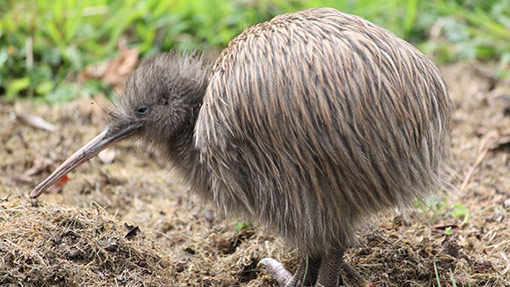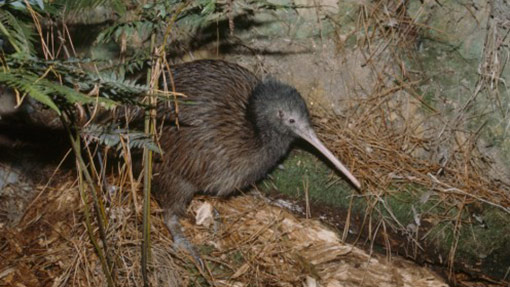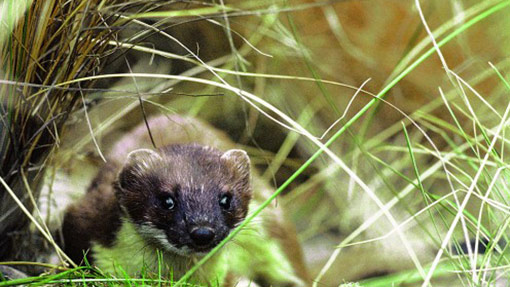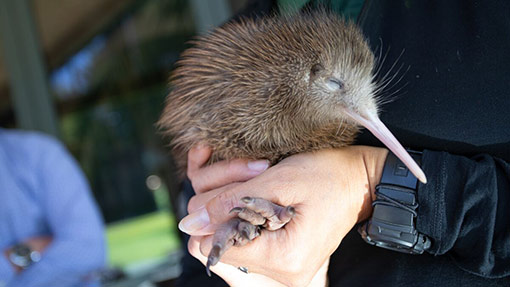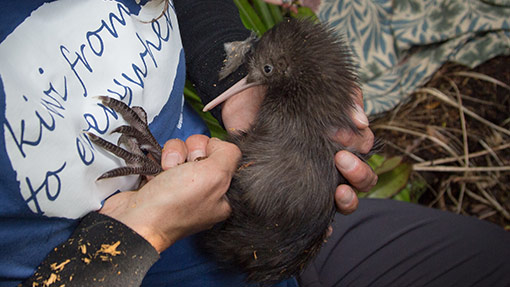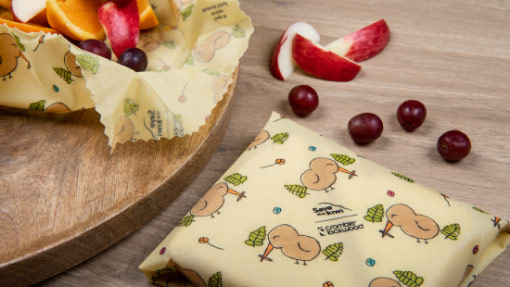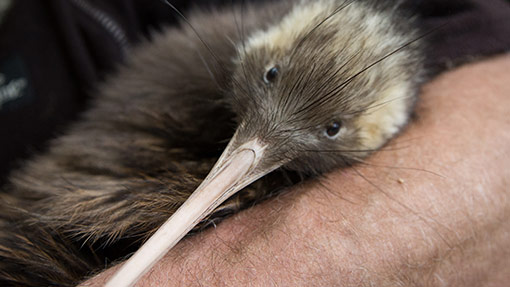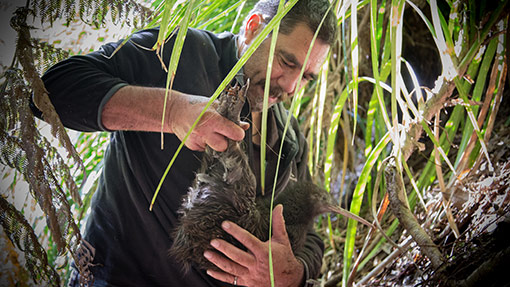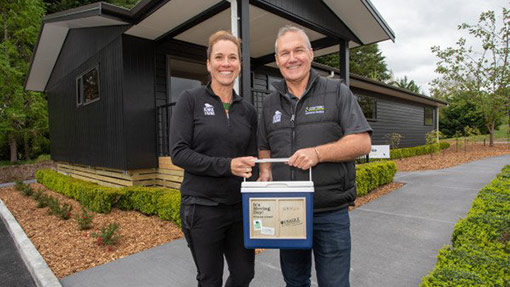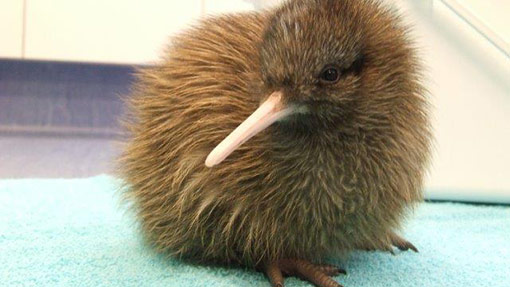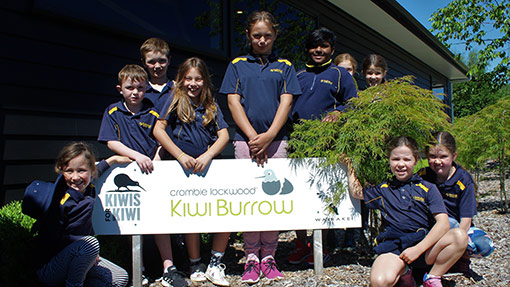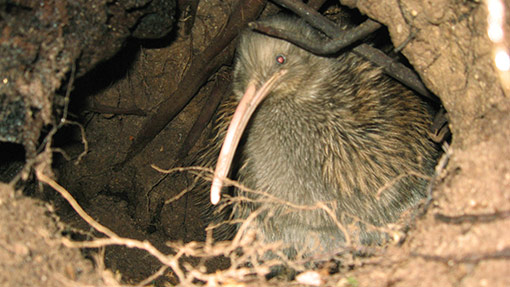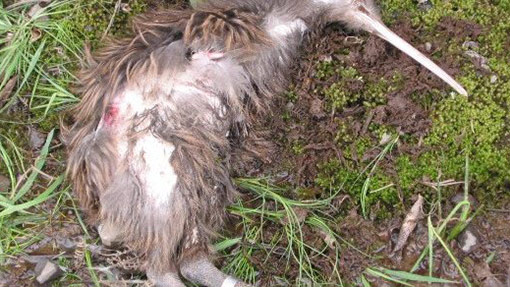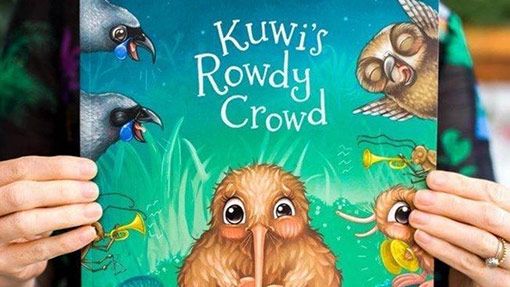Tokoeka (Apteryx australis) are thought to be the ancestral type of brown-coloured kiwi.
There are four distinct geographical forms, known as taxa:
- Haast tokoeka
- Northern Fiordland tokoeka
- Southern Fiordland tokoeka
- Rakiura (Stewart Island) tokoeka
Except for Haast tokoeka, the other three taxa are generally larger than brown kiwi, and some can grow as big as the great spotted kiwi.
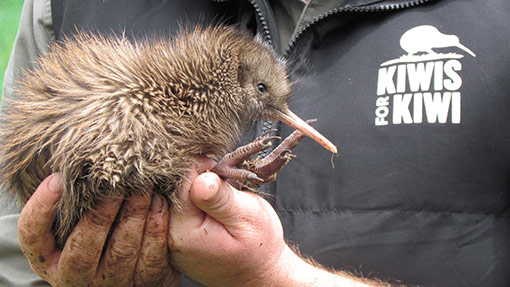
Population status
All population numbers quoted are based on 2015 estimates unless otherwise stated. An updated population estimate will be provided in 2022, based on expansion of predator control operations and increased knowledge on the outcomes of various pest control regimes.
The combined population numbers for the four tokoeka taxa make it the most numerous kiwi species in New Zealand, at 25,900.
However, the Haast tokoeka, a mountain-loving kiwi, is New Zealand’s rarest taxa, with an estimated population of just 400.
The most abundant taxa is the Rakiura (Stewart Island) tokoeka, with an estimated population of 13,000. This is a 13% decline from the 2008 population estimate.
The table below shows 2008 and 2015 estimates for the four tokoeka taxa, and what they could be in 15 years time. It assumes a decline of 1% each year for the Fiordland tokoeka, an annual decline of 1.8% for the Rakiura (Stewart Island) tokoeka, and an annual increase of 4.2% for the Haast tokoeka, which is very actively managed through Operation Nest Egg and a 6,000-hectare stoat trapping programme. At present, 80% of Haast tokoeka are under active management. By contrast, only 8.8% of the Fiordland taxa is under active management, and only 1.9% of Rakiura birds are actively managed.
Family dynamics
Breeding pairs
As with other kiwi species, all tokoeka taxa usually have just one mate, and mate for life. If its partner dies, a bird will re-mate.
Rakiura (Stewart Island) tokoeka differ from most other kiwi species because they can live in large family groups, with an alpha male and female. Their sons and daughters stay around as helpers until a vacancy arises in a nearby territory, allowing them to disperse.
Eggs & clutches
Fiordland tokoeka and Haast tokoeka usually have just one egg in a clutch and one clutch each year. Birds that are part of Operation Nest Egg will have two clutches in a season, which means it is likely that a pair will lay again if it loses an egg to a predator.
Because Rakiura (Stewart Island) tokoeka live in family groups with helpers available, it is not unusual for breeding pairs to have two clutches in a season.
Incubation
Haast tokoeka pairs share the incubation, with males doing about 60% of the egg sitting.
Rakiura (Stewart Island) birds are unique among kiwi because young birds help with incubation, sitting on the egg for up to 20% of the time. The alpha pair shares the remaining incubation time equally. The female takes the night shift, which is why female birds are often seen during the day.
Theories about why the Rakiura (Stewart Island) birds are different include the effect a colder southern climate may have had in their evolution, especially during ice ages when birds would have stayed together for warmth. The North Island would have been milder, allowing kiwi living there to have more eggs and more clutches each year. Another theory is that staying together provided defense against ancient predators, such as the goshawk and giant eagle.
Chicks
Except for Haast tokoeka, tokoeka chicks stay with their family unit. On Rakiura (Stewart Island), this can be for up to seven years.
For Haast tokoeka, chicks are independent after about one month.
Operation Nest Egg
Operation Nest Egg is used only for the critically endangered Haast tokoeka.
Kōhanga kiwi
Kōhanga kiwi populations have only been established for Haast tokoeka. Read about them here.
The Tokoeka Family
Fiordland Tokoeka
Until 2006, the tokoeka in Fiordland were thought to be the same as those found on Rakiura (Stewart Island), but genetics research has changed this.
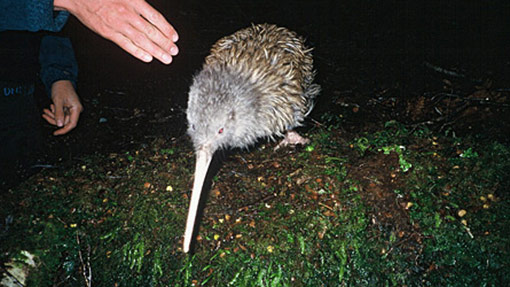
Haast Tokoeka
Haast tokoeka were identified as a distinct taxon in 1993. They have brown-grey plumage with a distinctive reddish tinge, whitish feet, a short beak with down-curved bills, and long whiskers.
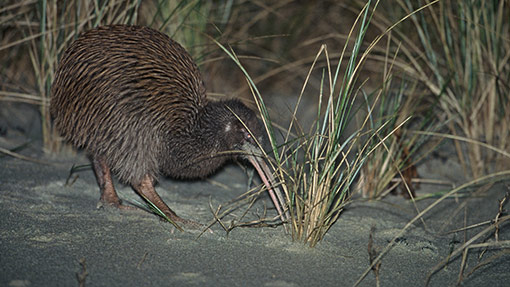
Stewart Island Tokoeka
Rakiura (Stewart Island) tokoeka are a stocky round bird and, although kiwi are normally solitary, as a pair they are quite communal.
Learn more about kiwi
Kiwi species
All kiwi are the same, right? Wrong. There are actually five different species of kiwi, all with their own unique features.
Threats to kiwi
The national kiwi population is under attack from many different threats, including predators, loss of habitat, and fragmentation of species.
Where to see kiwi
Many facilities around New Zealand are home to kiwi, plus there are places where, if you're lucky, you could see one in the wild too.
How you can help
Many hands make light work. Keen to join the mission to save the kiwi? Here are some ways you can help.
Protect kiwi
For kiwi to thrive, we all need to work together. Find out what you can do to help save the kiwi, wherever in Aotearoa you happen to be.
Fundraise
To continuing saving the kiwi, conservation groups need funding. Support the mission by making a donation, setting up a fundraising project, or engaging with other fundraising initiatives.
Shop for kiwi
Show your support for Save the Kiwi and some of our wonderful sponsors by purchasing products that will help us do more of what we do.
Donate
Make a quick donation, donate a day of annual leave or invest to save the kiwi.


